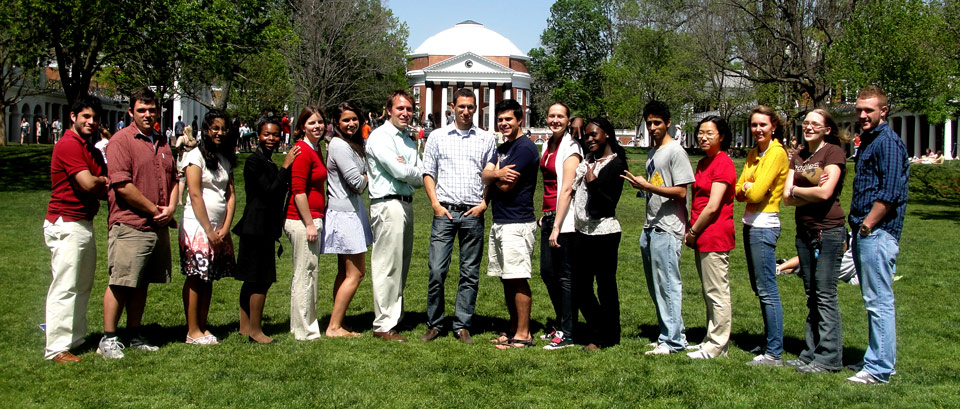Team:Virginia United
From 2010.igem.org
(Difference between revisions)
(→Quorum Sensing Amplifiers and a Co-design Approach for Information Processing) |
|||
| (49 intermediate revisions not shown) | |||
| Line 1: | Line 1: | ||
| - | |||
| - | |||
| - | |||
| - | |||
| - | |||
| - | |||
<html xmlns="http://www.w3.org/1999/xhtml"> | <html xmlns="http://www.w3.org/1999/xhtml"> | ||
<head> | <head> | ||
| Line 77: | Line 71: | ||
<td colspan="2" bgcolor="#FFFFFF"><div id="ddtopmenubar" class="solidblockmenu"> | <td colspan="2" bgcolor="#FFFFFF"><div id="ddtopmenubar" class="solidblockmenu"> | ||
<ul> | <ul> | ||
| - | + | <li><a href="https://2010.igem.org/Team:Virginia_United">HOME</a></li> | |
<li><a href="https://2010.igem.org/Team:Virginia_United/Team" rel="ddsubmenu1">TEAM</a></li> | <li><a href="https://2010.igem.org/Team:Virginia_United/Team" rel="ddsubmenu1">TEAM</a></li> | ||
| + | <li><a href="https://igem.org/Team.cgi?year=2010&team_name=Virginia_United" rel="ddsubmenu1">PROFILE</a></li> | ||
<li><a href="https://2010.igem.org/Team:Virginia_United/Project" rel="ddsubmenu2">PROJECT</a></li> | <li><a href="https://2010.igem.org/Team:Virginia_United/Project" rel="ddsubmenu2">PROJECT</a></li> | ||
| - | <li><a href=" | + | <li><a href="https://2010.igem.org/Team:Virginia_United/Modeling"rel="ddsubmenu5">MODELING</a></li> |
| - | <li><a href=" | + | <li><a href="https://2010.igem.org/Team:Virginia_United/Parts"rel="ddsubmenu5">PARTS</a></li> |
| - | <li><a href=" | + | <li><a href="https://2010.igem.org/Team:Virginia_United/Notebook"rel="ddsubmenu4">NOTEBOOK</a></li> |
| - | <li><a href=" | + | <li><a href="https://2010.igem.org/Team:Virginia_United/Safety" rel="ddsubmenu3">SAFETY</a></li> |
| + | <li><a href="https://2010.igem.org/Team:Virginia_United/Human_Practices" rel="ddsubmenu3">HUMAN PRACTICES</a></li> | ||
| + | <li><a href="https://2010.igem.org/Team:Virginia_United_/_Sponsors">SPONSORS</a></li> | ||
| + | <li><a href="https://2010.igem.org/Team:_Virginia_United_/_Gallery"rel="ddsubmenu5">GALLERY</a></li> | ||
</ul> | </ul> | ||
</div> | </div> | ||
</html> | </html> | ||
| - | |||
<html xmlns="http://www.w3.org/1999/xhtml" xml:lang="en" lang="en"> | <html xmlns="http://www.w3.org/1999/xhtml" xml:lang="en" lang="en"> | ||
| - | <embed src="http://artprintwebdesign.com/igem/ | + | <embed src="http://artprintwebdesign.com/igem/banner-3.swf" quality="high" bgcolor="#ffffff" width="960" height="188" name="spinner" align="middle" allowScriptAccess="sameDomain" allowFullScreen="false" type="application/x-shockwave-flash" pluginspage="http://www.adobe.com/go/getflashplayer" /> |
</html> | </html> | ||
| - | + | [[Image:va-united-team-960.jpg|960px|thumb|center|frame]] | |
| - | + | ''' | |
| - | + | ||
| - | + | ||
| - | + | ||
<center> | <center> | ||
| - | + | == '''Quorum Sensing Amplifiers and a Co-design Approach for Information Processing''' == | |
| + | <BR> | ||
| + | As the field of biological engineering grows, so too does the complexity of genetically engineered systems. Fabricated metabolic pathways are becoming increasingly intricate and expansive: how is one to know if the approach used to synthesize a pathway is necessarily the best approach? Our group, composed of five institutions, strives to show that co-design, a common engineering practice used to evaluate relative efficiencies, can be implemented to select the best design for a system. Using a biosensor as an application of carrying out co-design, we constructed three systems utilizing different mechanisms that can detect inputs and give an output correlating to which input(s) it senses. To maintain consistency, our systems are designed to use quorum sensing to amplify signal transduction upon input detection. This essentially acts as an on/off switch, allowing the system to be engineered to detect a certain input threshold and establishing a binary response. | ||
</center> | </center> | ||
| - | |||
| - | |||
| - | <html> | + | <html xmlns="http://www.w3.org/1999/xhtml" xml:lang="en" lang="en"> |
| - | < | + | <embed src="http://artprintwebdesign.com/igem/Pulse_Particles_AS3-green-100.swf" quality="high" bgcolor="#000000" width="960" height="100" name="spinner" align="middle" allowScriptAccess="sameDomain" allowFullScreen="false" type="application/x-shockwave-flash" pluginspage="http://www.adobe.com/go/getflashplayer" /> |
| - | + | ||
| - | + | ||
</html> | </html> | ||
| - | |||
| - | |||
| - | |||
| - | |||
| - | |||
| - | |||
| - | |||
| - | |||
| - | |||
| - | |||
| - | |||
| - | |||
| - | |||
| - | |||
| - | |||
| - | |||
| - | |||
| - | |||
| - | |||
| - | |||
| - | |||
| - | |||
| - | |||
| - | |||
| - | |||
| - | |||
| - | |||
| - | |||
| - | |||
| - | |||
| - | |||
| - | |||
| - | |||
| - | |||
| - | |||
| - | |||
| - | |||
| - | |||
| - | |||
| - | |||
| - | |||
| - | |||
| - | |||
| - | |||
| - | |||
| - | |||
| - | |||
| - | |||
| - | |||
| - | |||
| - | |||
| - | |||
Latest revision as of 03:27, 28 October 2010
 "
"
